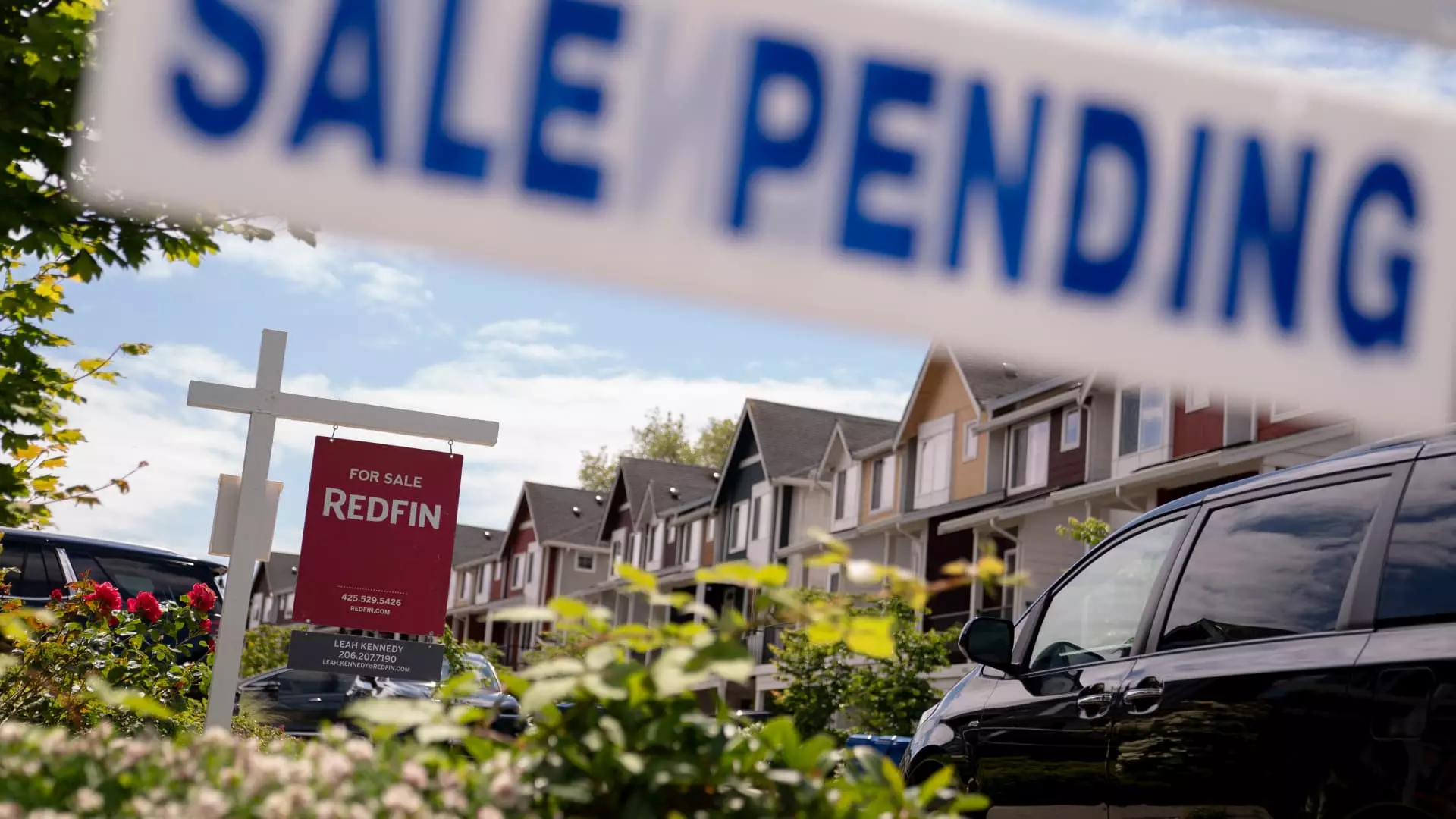As we find ourselves navigating through the economic landscape of 2023, the shockwaves reverberate through the housing market as mortgage rates surged to a staggering 6.81%—the highest recorded since February. This pivotal moment demands both scrutiny and discussion, as we are witnessing a drastic shift that impacts not just homebuyers but the entire market ecosystem. The Mortgage Bankers Association has noted an alarming 8.5% drop in total mortgage application volume last week compared to the prior week. Such a drastic downturn signals a ripple effect that is likely to reshape buyer behavior and market trends in the months to come.
There is an undeniable tension in the air. A confluence of factors is driving prospective buyers towards making riskier financial decisions, including embracing adjustable-rate mortgages (ARMs) that come with tantalizingly lower initial rates, albeit with inherent volatility. This rush towards ARMs raises larger questions about financial literacy and the consequences of underestimating the potential for rate adjustments. In a time when economic uncertainty looms overhead like a dark cloud, such risky ventures could spell trouble for unsuspecting borrowers.
Shifting Buyer Dynamics in an Expanding Inventory Environment
While the statistics illustrate a percentage drop in mortgage applications for home purchases, the silver lining comes through an annual comparison. Even with a current overall decrease, applications are still 13% higher than this exact week last year. However, a deeper dive reveals that the market is flooded with 30% more active inventory than the previous year, raising a significant question: Is demand truly outpacing supply or just catching up?
The augmenting inventory might indicate a healthier market to some, yet it also suggests that last year’s low inventory crisis was a temporary, artificially limited scenario rather than a reflection of sustained demand. The higher levels of active listings might be diluting the perceived urgency amongst buyers, who can now afford to be more selective—or even critical—about their purchases. There’s an irony here: while more homes are available, the uneven economic landscape means that hesitation is prevalent, as buyers weigh the risks of volatile mortgage costs amidst growing prices.
The Psychological Impact of Economic Uncertainty
One of the core issues plaguing today’s homebuyers is not just the numbers themselves but the overarching economic anxiety that shapes decision-making. Mike Fratantoni, the senior vice president and chief economist at the MBA, encapsulates this sentiment well with his remarks highlighting buyer hesitance rooted in economic volatility. The fear of the unknown is potent and insidious, and it changes the dynamics of home purchasing from a straightforward transaction to a complex emotional calculus.
As financial stressors mount, prospective buyers may find themselves wrestling with the weight of uncertainty, which can lead to second-guessing otherwise sound decisions. Pair that with rising home prices and the pressure to secure a favorable interest rate, and you have a recipe for paralysis. The issue here is not merely about numbers; it’s about public confidence—a commodity often underestimated in economic considerations.
A Reflection on Financial Literacy and Responsible Borrowing
It’s astonishing to see how many borrowers are gravitating towards ARMs due to their initial lower rates, yet this tendency reveals a troubling lack of awareness regarding long-term financial implications. The abrupt surge in ARM applications—now at 9.6%, the highest since November 2023—signals that many are willing to gamble on fluctuating rates without truly comprehending the risks involved.
In an ideal world, financial education would empower consumers to understand the full scope of their options, thus preventing them from making hasty decisions out of desperation. When people grasp the potential volatility tied to ARMs, they will realize that a few hundred dollars saved today might lead to thousands lost tomorrow. It’s imperative that lenders and educational institutions rally to provide consumers with the necessary knowledge to make informed decisions in this precarious environment.
The road ahead might be filled with turbulence, yet it also presents an opportunity for growth and reflection. Whether the housing market emerges intact or forever altered depends on how we, as a society, choose to navigate this turbulent economic weather.

